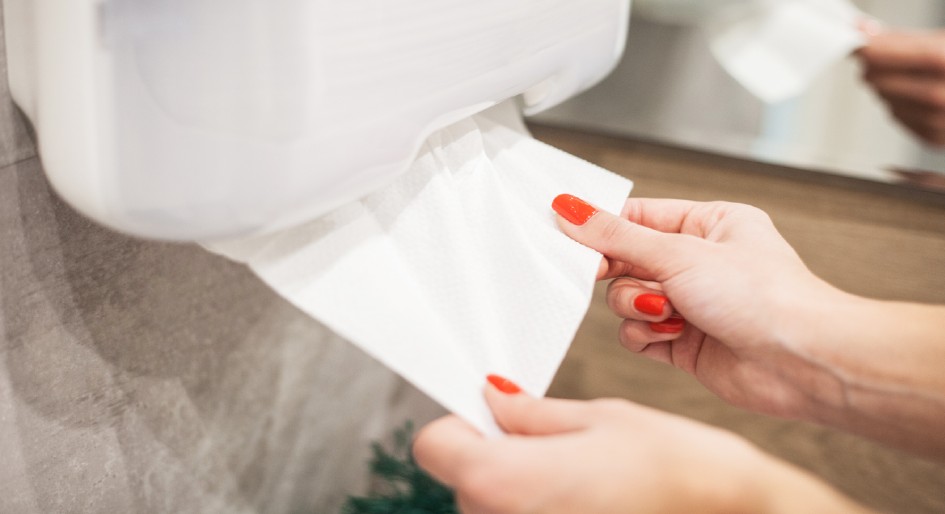One of the most common complaints about buildings relates to the upkeep of restrooms. Research shows that restroom cleanliness affects a company’s bottom line, as people are more likely to avoid a business if they encounter a dirty restroom. While most facility managers are focusing on the state of the floors, toilets and overall odour of restrooms, some are overlooking an important factor that impacts guest satisfaction: paper products and dispensers.
According to a recent Harris Poll, 90 per cent of adults believe employers who provide well – stocked workplace restrooms care more about their employees than employers who do not. The survey also found that 81 per cent of people think employees are more likely to value their job when employers supply high-quality products such as colourful dispensers, no-touch dispensers, air fresheners, restroom cleaning services, restroom mats and scented hand soaps.
Without proper research, choosing a dispenser at random could prove to be a costly decision for a business. To avoid overspending on paper towels due to wasteful overuse, facility managers should be well-versed in the types of dispensers, paper towels and toilet paper as well as the costs and impact these products can have on the customer experience.
Selecting the right paper products and dispensers
There are two types of paper towels commonly used in public restrooms, which includes c-fold and z-fold. C-fold paper towels have tabs that are folded into each other, allowing each individual towel to lie on top of the one below. On the other hand, z-fold paper towels have an extra fold in the middle, creating a “z” shape, which allows the towels to interlock with each other. Z-fold towels are dispensed one at a time and tend to provide easier access for patrons. Because C-fold towels aren’t interlocked, the user is more likely to grab a “clump” and create unnecessary waste.
In general, restroom paper products are a highly-used commodity in the United States. In 2019, 318.4 million Americans used paper towels, a figure that’s projected to increase to 328 million by 2023. As several studies have shown that air dryers spread bacteria throughout restrooms and onto wet hands, many public facilities opt to provide patrons with paper towels for hand drying purposes.
Investing in a high-quality paper dispenser can make or break a customer’s restroom experience in any facility. Dispensers can plague customers with problems like paper jams, shredding upon removal or difficulty removing just one towel at a time or simply running out. However, innovative dispensers minimize wasted resources and over-consumption by only dispensing one paper towel at a time. Some dispensers provide an alert when paper is low or offer settings that allow the business to regulate how much paper is dispensed and how often. It not only makes them environmentally friendly, but also a more cost-effective solution.
Reducing paper waste
Building managers must consider that many patrons take more paper towels than needed during a visit to the restroom. Oftentimes this occurs because facilities offer guests low-quality paper towels paired with low-quality dispensers. Selecting a towel and dispenser type that suits a variety of needs is important. Facilities should conduct quality tests to determine how much product is going to waste in a public restroom and if the paper is falling apart when wettened.
When reducing paper waste, facility managers should also pay close attention to case size and quality. One case may offer 4,000 pieces of paper towel but might be thinner ply, which can result in guests using up to four pieces of paper for one hand dry. This only offers enough supply for 1,000 restroom guests. On the other hand, a high-quality paper towel case may offer 2,800 pieces of paper, but guests will only need to use two pieces of paper per hand dry. This case then provides 1,400 hand dries, allowing a business to service 400 more customers.
Selecting a cheaper paper product isn’t always better, as dispensers may need to be refilled more often, which requires greater oversight by facility managers. Less absorbent paper due to the thinner ply will provide fewer hand dries and drive up long-term paper product costs, so simply looking at cost is not an adequate approach.
The bottom line
Facilities should be well-informed about restroom paper products and corresponding dispensers to influence the customer experience positively. Buying higher-quality paper can save businesses more money in the long-run while investing in high-quality dispensers avoids issues such as jams and shredding and therefore provides a better customer experience. Once the right products are in place, running quality checks and regularly conducting restroom maintenance can help a facility positively influence its bottom line while maintaining high customer satisfaction.
John Engel is Director of Marketing for the Facility Services division of Cintas. John has more than 12 years of industry experience and is currently responsible for product line management and development. For more information about facility services offerings from Cintas, visit cintas.com/facilityservices.








